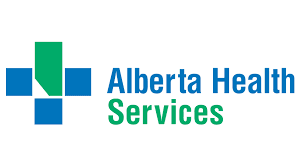ATHABASCA - The province of Alberta is taking another run at increasing Albertan’s access to healthcare, declaring that nurse practitioners (NPs) will be able to open their own family health clinics.
In a Nov. 22 release, the province announced a plan to “support and stabilize primary health care” by allowing NPs to open their own clinics and offer services based on “their scope of practice, training, and expertise.”
“Nurse practitioners are highly trained and valued medical professionals. By enabling them to open their own clinics, we are ensuring Albertans can more easily access the care they need,” said Premier Danielle Smith in the release.
Athabasca University has the largest NP program in the country — currently around 650 students are enrolled, of which approximately 160 are in Alberta. Dr. Jennifer Knopp-Sihota, an associate professor at AU and 20-year veteran of the field, said the change was a step in the right direction, even if NPs often do their best work in a team.
“NPs have so much to offer, not only in that holistic nursing approach, but also in the medical model,” said Knopp-Sihota. “They can do things like diagnose illness, treat things with drugs, order tests, interpret findings, refer to specialists. Their work looks similar a family doctor in the end.”
What is a NP?
Nurse practitioners start their careers as registered nurses (RN). After a four-year undergrad in nursing, they need to work at least 4,500 hours, at least two or three years, before they can enrol in a graduate master’s degree program, which typically takes a further two to four years and requires 800 clinical hours.
Knopp-Sihota said many of the students are women who are raising families and continuing their work as RNs at the same time — while it does extend the program, Knopp-Sihota said maturity is a strong asset for them post-graduation, where they’ll never stop learning.
“They have experience in the area they work in, and they have to be open to learning. Once you’re done that program you have to be committed to keeping up with changing evidence and practicing those skills,” said the professor.
What role do they play?
Ideally, Knopp-Sihota said NPs would slot into an existing clinic where they could work alongside — but not underneath — a family physician.
“The research shows that team-based care is the best, but there are decades of research that shows that NPs provide as good care as a family physician, if not better, depending on what that care is,” said Knopp-Sihota. “It’s an evidence-based field, we do want to work in teams. It can only improve what we have already in Alberta, and it’s been done in other areas of the country for years successfully.”
Accessibility was the other major benefit that Knopp-Sihota identified.
“Not only are NPs great at filling those rural health roles where there are no family physicians or people who want to go to those areas, there’s also a ton of patients in Edmonton for example who are unattached and need providers,” she said. “Primary care nurse practitioners can provide the full cradle-to-grave care.”
Athabasca’s mayor Rob Balay said the announcement was a welcome one — residents in the region face a severe shortage of family doctors, and newcomers are on a long waiting list.
“It’s much needed, there’s so many of our residents that don’t have a family physician, and this will help with the transition until we have doctors in place to address that,” said Balay.
Balay also referenced Ontario and Quebec as successful examples of NP-led clinics, saying it had worked out great for both provinces.
Family doctors not convinced
Currently the funding model hasn’t been released yet, which has brought some tension into play. The Alberta Medical Association’s (AMA) new president, Dr. Paul Parks, said family physicians cannot be replaced by nurse practitioners in a Nov. 23 press release, as well as posts to AMA’s X account, formerly known as Twitter.
“Building capacity is good if it doesn’t simply create new problems as today’s announcement re: independent nurse practitioners does,” read a five-part Nov. 22 post. “Albertans with family doctors often end up in the ER. Government needs to focus on the foundation of primary care — family physicians and rural generalists.”
Knopp-Sihota said while family physicians and NPs have traditionally had a good relationship, concerns over funding were creating problems.
“NPs have been working with family physicians for years and its always been a good relationship,” said Knopp-Sihota. “When money starts to get involved, and there’s a potential that one provider might be paid more or getting a better deal from the government, that’s when the friction starts.”
“Really though, we’re better in a team, so if we can figure out a payment model that works for everybody and fits or treats the most patients, and we can remain working in teams, I think there won’t be a problem. It’s hard for them to rally against that solution when so many people need primary care,” said Knopp-Sihota.



